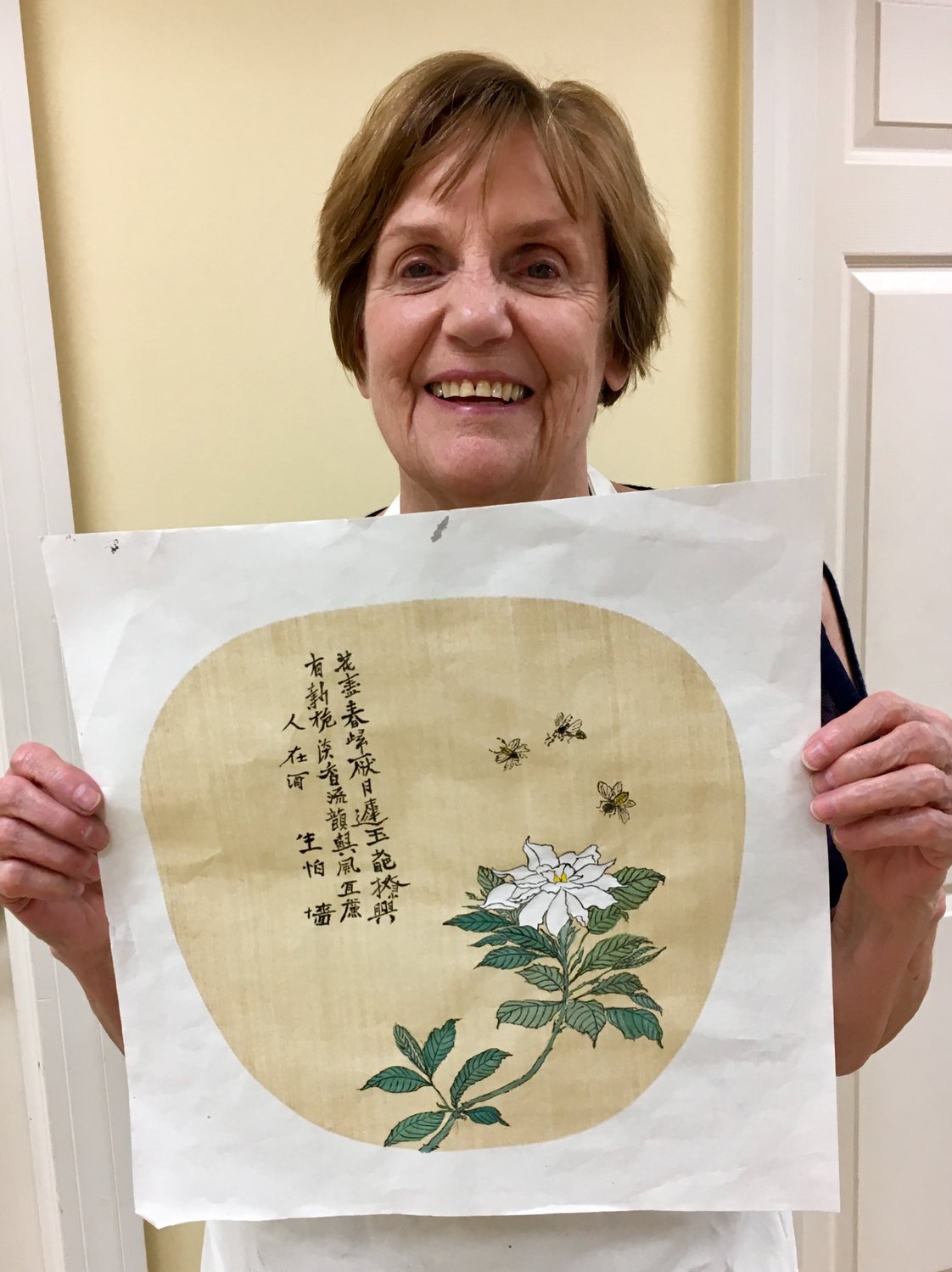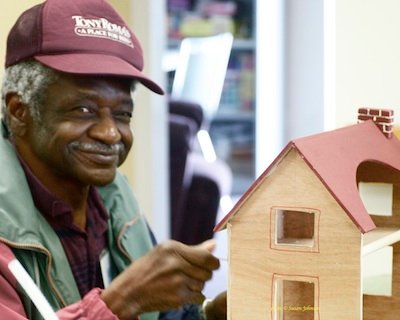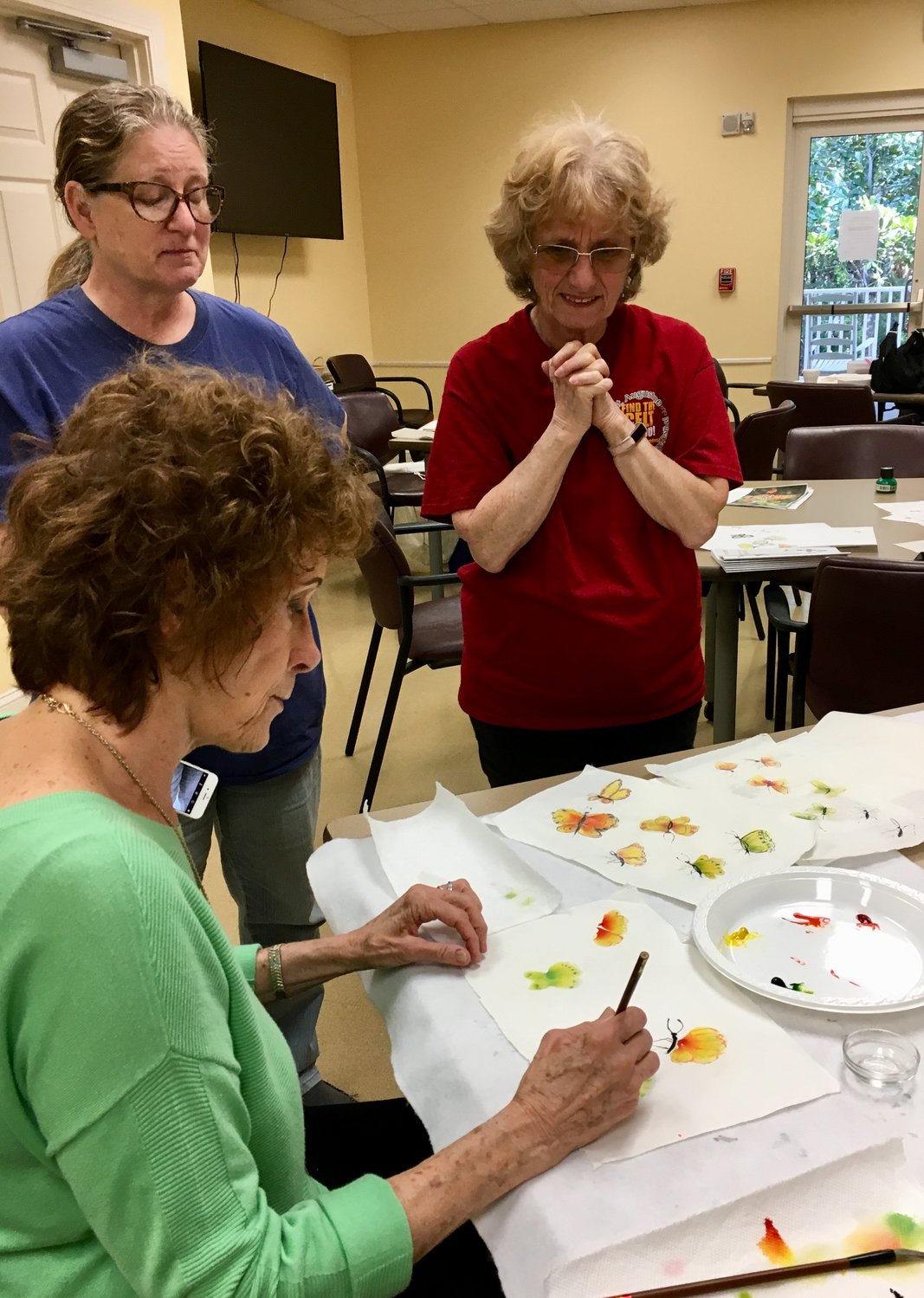Art Therapy as a lifelong enrichment
Centers have begun using art for seniors both as preventative and restorative measures against dementia
Probably as old as humanity itself, art has been a central aspect how people interact with each other during the best and worst of times throughout history.
More and more, however, people are tuning in to how art works on the brain and its intrinsic ability to help people communicate. Late in life, when many suffer from the inability to effectively navigate the neural highways in their brains due to memory loss, dementia and Alzheimer’s, art has become a shortcut to symbolic expression when verbal language fails.
Paulette Kozlowski, manager of The Sunshine Center, a therapeutic adult day care center in St. Augustine, says the center is turning to art therapy more than ever for daily programs.
“Art has been around forever, but the fact that people realized how therapeutic it can be has come out more and more as you work with people that are confused, or have an increased anxiety,” Kozlowski said. “They also have a difficult time expressing themselves. Art helps you to do all those things and it relaxes you, decreases your anxiety at the same time as giving you another way to express your emotions.”
For many people suffering from memory loss, the inability to communicate effectively can be extremely frustrating, causing them to be angry or fearful. According to the American Art Therapy Association, the technique can also help “improve cognitive and sensor-motor functions, foster self-esteem and self-awareness, cultivate emotional resilience, promote insight and enhance social skills,” among other benefits.
Kozlowski helps participants with a variety of mediums, crafting anything from decorative pinecones, birdhouses, painting with watercolors, adult coloring pages or holiday crafting. Kozlowski says that any hands-on task, guided in a way that promotes creativity within a non-oppressive but instructional environment can help navigate the brain toward fostering mental ability in a relaxing way.
Kozlowski also said that in many ways, the art that is created has a subtle ripple effect of positive reactions that manifests for individuals in the adult day care even after they come home.
“It's another way of showing families what they've done all day because when you don't have memory and families can ask you, ‘how was your day, what did you do?’ Now, they have something to show them,” she said.
In addition, she says the ability to form new skills helps build dwindling confidence issues that are often associated with memory loss.
“That is something you deal with all along with you deal with dementia, because of the opposite reason,” she said. “People are losing abilities all the time and self-esteem starts to go down where a sense of accomplishment can help bring it back up.”
Kozlowski said that art therapy’s benefits aren’t limited to those with memory loss or cognitive decline, however. She said that the beneficial effects can even be found in seniors without the disease.
Donna Heffner heads a “Sumi-e” class once a month at THE PLAYERS Senior Center in Ponte Vedra. For anyone unfamiliar, Sumi-e is a form of Japanese brush painting that uses heavy black ink, thick animal-hair brushes and rice paper. The painting style is rooted in Zen Buddhism and takes very controlled movements to create subtle designs. Each design may be accompanied by a haiku that further creates a story of the painting’s “spirit.”
Mastering the craft of Sumi-e takes hard work, patience and a focused understanding of how the brush and paper work together to achieve an image.
“There is a definite relationship between philosophy and what you're painting,” Heffner said. “You have to try to set the tone.”
According to “The History and Spirit of Chinese Art” by Lu Yilong, ink wash paintings are intended to grasp the “essence” of things while discarding their “actual, superficial manifestations.” The practice of transforming the image into art is meditative and intensely focused.
“It has a centering effect,” Heffner said. “You look at something and you think, how am I going to work with this?”
Kozlowski said that often, other “trending” techniques are found while practicing art therapy. Aroma therapy and “mindfulness” have been utilized with the practice before their mainstream popularity. The calming effect is often associated with intense concentration on skill building.
For seniors specifically, however, it is important to have the additional presence of a class like Heffner’s. The positive effects of socialization are seen more prominently in seniors’ mental health when outside factors can often cause isolation, which is associated with increased mortality and dementia, according to healthjournalism.org
“Everybody helps everybody else,” Heffner said. “Just getting in touch with your feelings or other people's feelings because with haiku we write it for somebody, or in honor of somebody. We celebrate holidays and birthdays. Somebody just lost their husband and we came together and did cards and notes.”
For anyone interested in joining Sumi-e Society of America Inc., email Donna Heffner at manddheff@aol.com. For caretakers of those with dementia and memory loss, Paulette Kozlowski hosts a “Savvy Caregiver” free, six-week program intended to train families and others for the role as caregiving. To register, call (904) 209-3674.












